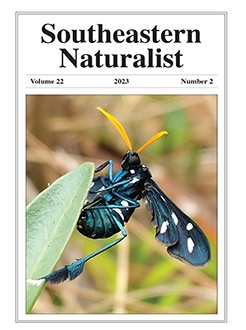Perimyotis subflavus (Tricolored Bat) was once common across the eastern United States, but in recent years, populations have declined drastically across the species' range, mainly because of mortality caused by white-nose syndrome. The fungus that causes white-nose syndrome has not been detected in Florida, and therefore the state may represent an important stronghold for the Tricolored Bat. We counted Tricolored Bats in Florida caves in January and February from 2014 to 2022 to better determine population size and document trends in abundance before the potential arrival of white-nose syndrome. We modeled trends in counts over time on the entire count dataset and on subsets based on karst region and cave size. In addition, we fit mixed-effects Poisson regression models to understand the influence of cave characteristics and investigator disturbance on Tricolored Bat counts. Models of statewide bat counts exhibited a strongly decreasing trend (mean = -17% per year) with a 67% decrease overall across the study period. Warmer temperatures on the day of survey were associated with lower counts, and longer caves were associated with higher counts. We did not find an impact of investigator disturbance on bat counts. Although ambient temperatures influenced observed numbers, we cannot exclude the possibility that these long-term declines are the result of undetected or indirect losses from white-nose syndrome. It is unknown if Tricolored Bats roosting in other locations that are not routinely monitored (e.g., trees) are experiencing similar declines; thus, incorporating other monitoring methods would improve the understanding of Tricolored Bat population trends.
How to translate text using browser tools
31 May 2023
Decline of Tricolored Bats (Perimyotis subflavus) in Florida Caves in Winter
Lisa M. Smith,
Andrea Sylvia,
Terry J. Doonan,
Jeffery A. Gore
ACCESS THE FULL ARTICLE

Southeastern Naturalist
Vol. 22 • No. 2
May 2023
Vol. 22 • No. 2
May 2023




